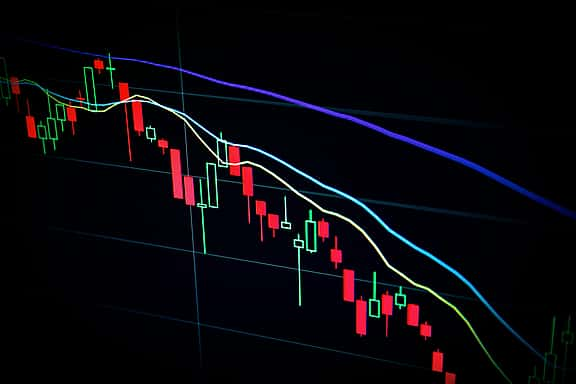It gets worse. Once popular stablecoins such as Luna and TerraUSD collapsed suddenly without warning. Meanwhile, trading platforms Coinbase and Gemini, among others, have their fair share of financial woes.
This market decline is what financial experts have dabbed “crypto winter.”
What is Crypto Winter?
The term “crypto winter” was first used in 2018 to describe a cryptocurrency crash that saw Bitcoin plunge from a trading value of $20,000 to $3,000. Crypto winter refers to a prolonged bear market period in the crypto industry, characterised by plummeting prices, market capitalisation, and trade volume.
There are no specific reasons for the occurrence of crypto winter, nor is it formally declared by a regulatory authority. It’s one of those “You’ll know it when you see it” situations.
Since 2022, a cascade of unexpected coin crashes has tanked billions of crypto investments globally. The increasingly volatile market erodes confidence among crypto miners, buyers, sellers, and brokers. All these factors add up to the crypto winter we see today.
The Fall of FTX and the Crypto Winter
FTX Trading Ltd., commonly known as FTX, was one of the largest and fastest-growing global crypto exchange platforms. That was until early November 2022, when the company, once valued at a whopping $32 billion, collapsed into bankruptcy.
It all happened in a matter of days, sending shockwaves across the volatile crypto market. For starters, FTT's value (FTX’s digital token) dropped more than 80% between November 6 and November 10. Meanwhile, fifteen of the largest cryptocurrencies collectively lost over $152 billion in market value in only three days after FTX declared bankruptcy.
The FTX crash is just one in a long series of unfortunate events contributing to the prevailing crypto winter. Or is FTX a victim of the crypto winter? It’s also a vivid demonstration of the delicate and vulnerable nature of today’s crypto market.
What Happened to FTX?
Fintech visionary Sam Bankman-Fried founded FTX in 2019 and served as its CEO until November 11, 2022. Two years prior, Bankman-Fried had launched the quantitative trading firm Alameda Research, which would later become a big part of FTX’s hedge fund.
After its launch, FTX garnered support and investments from key crypto and fintech players. The platform quickly grew into the fourth-largest exchange platform for derivative currencies. Binance, the world's largest crypto exchange platform by volume, was one of the earliest FTX investors and held a sizeable amount of FTT tokens.
On November 2, CoinDesk published a report based on a leaked Alameda balance sheet that exposed a shady financial relationship between Alameda and FTX. According to the leaked data, Alameda had $14.6 billion in assets as of June 30, most of which was in FTT.
Four days after this revelation, Binance liquidated its $580 million FTT holding. This move shocked the FTX community, triggering a classic run on the bank that saw FTX customers withdraw $6 billion in just two days. By the third day, FTX was in crisis and had no money left to service the withdraws.
On November 8, Binance threw FTX a lifeline and a way out of the liquidity crunch with a non-binding letter of intent to purchase the company. But, the following day, Binance backed out of the deal, leaving the company bankrupt and with billions of dollars in liabilities.
It turned out that FTX was using customer accounts to fund risky bets and bailouts for Alameda. Both companies were essentially losing money that wasn’t theirs to lose.
The story of FTX's downfall goes much deeper than this and is currently under investigation as former CEO Sam Bankman-Fried faces trial on multiple counts of fraud. Interestingly, Bankman-Fried’s lawyers argue that the crypto winter and unfair government regulations are to blame for the company’s failure in a bid to dismiss 10 of the 13 criminal charges levelled against Bankman-Fried.
Conclusion
Giant financial companies like FTX never go down alone. Other crypto exchange platforms, such as BlockfFi, grappled with mass withdraws due to the fallout and had to file for bankruptcy too. Also, FTX creditors, customers, investors, and stakeholders incurred untold losses. Given FTXs standing liabilities, this is possibly the largest bankruptcy filing of its kind in the United States.






